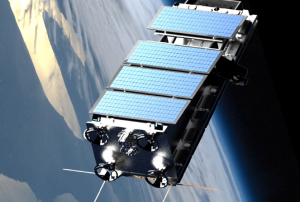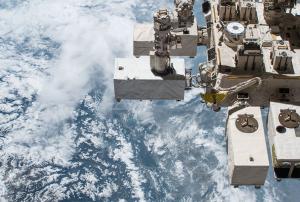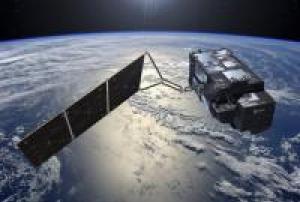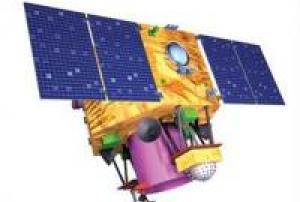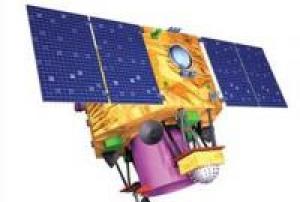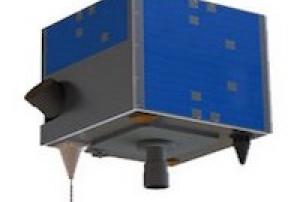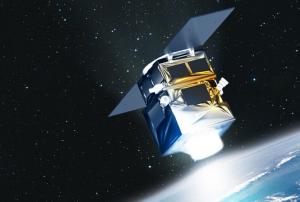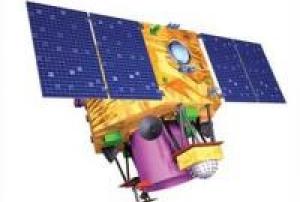Feu de forêt
Definition
Facts and figures
Further information
UN-SPIDER Regional Support Offices with hazard-specific expertise
Related content on the Knowledge Portal
NovaSAR-1 was launched into orbit on September 16, 2018 from Satish Dhawan Space Centre in Sriharikota, India. It was developed by the United Kingdom Space Agency (UKSA) in cooperation with the Indian Space Research Organisation (ISRO), the Commonwealth Scientific and Industrial Research Organisation (CSIRO) and the Department of Science and Technology-Advanced Science and Technology Institute (DOST-ASTI) of the Republic of the Philipines. NovaSAR-1 orbits at 583 km above the earth's surface and is fitted with a Synthetic Aperture Radar (SAR) sensor that makes use of microwaves in the electromagnetic S-band. The spatial resolution of its imagery ranges between 6 and 30 metres. The data collected by NovaSAR-1 helps monitor climatological disasters (forest fires and droughts) and hydrological disasters (floods).
16/09/2018The ECOsystem Spaceborne Thermal Radiometer Experiment on Space Station (ECOSTRESS) mission measures the temperature of plants to better understand how much water plants need and how they respond to stress. ECOSTRESS is attached to the International Space Station (ISS) and collects data over the conterminous United States (CONUS) as well as key biomes and agricultural zones around the world and selected FLUXNET (http://fluxnet.fluxdata.org/about/) validation sites. A map of the acquisition coverage can be found on the ECOSTRESS website (https://ecostress.jpl.nasa.gov/science).
29/06/2018Carrying a suite of cutting-edge instruments, Sentinel-3 will measure systematically Earth’s oceans, land, ice and atmosphere to monitor and understand large-scale global dynamics. It will provide essential information in near-real time for ocean and weather forecasting.
read more
The mission is based on two identical satellites orbiting in constellation for optimum global coverage and data delivery. For example, with a swath width of 1270 km, the ocean and land colour instrument will provide global coverage every two days. Sentinel-3B was launched on 25 April 2018.
With a focus towards our oceans, Sentinel-3 measures the temperature, colour and height of the sea surface as well as the thickness of sea ice. These measurements will be used, for example, to monitor changes in sea level, marine pollution and biological productivity.
Over land, this innovative mission will provide a bigger picture by monitoring wildfires, mapping the way land is used, provide indices of…25/04/2018Cartosat-2 is an advanced remote sensing satellite with a single panchromatic camera (PAN) capable of providing scene-specific spot imageries for cartographic applications. The camera is designed to provide imageries with better than one meter spatial resolution and a swath of 10 km. The satellite will have high agility with capability to steer along and across the track up to + 45 degrees. It will be placed in a sun-synchronous polar orbit at an altitude of 630 km. It will have a revisit period of four days. The re-visit can be improved to one day with suitable orbit manoeuvres.
Several new technologies like two mirror on axis single camera, Carbon Fabric Reinforced Plastic based electro optic structure, lightweight, large size mirrors, JPEG like data compression, advanced solid state recorder, high-torque reaction wheels and high performance star sensors are being employed in Cartosat-2.
Beginning with Cartosat 2C, a Multi-spectral camera was added…
read more12/01/2018Cartosat-2 is an advanced remote sensing satellite with a single panchromatic camera (PAN) capable of providing scene-specific spot imageries for cartographic applications. The camera is designed to provide imageries with better than one meter spatial resolution and a swath of 10 km. The satellite will have high agility with capability to steer along and across the track up to + 45 degrees. It will be placed in a sun-synchronous polar orbit at an altitude of 630 km. It will have a revisit period of four days. The re-visit can be improved to one day with suitable orbit manoeuvres.
Several new technologies like two mirror on axis single camera, Carbon Fabric Reinforced Plastic based electro optic structure, lightweight, large size mirrors, JPEG like data compression, advanced solid state recorder, high-torque reaction wheels and high performance star sensors are being employed in Cartosat-2.
Beginning with Cartosat 2C, a Multi-spectral camera was added…
read more23/06/2017The Sentinels are a fleet of satellites designed specifically to deliver the wealth of data and imagery that are central to the European Commission’s Copernicus programme.
read more
Sentinel-2 carries an innovative wide swath high-resolution multispectral imager with 13 spectral bands for a new perspective of our land and vegetation. The combination of high resolution, novel spectral capabilities, a swath width of 290 km and frequent revisit times provides unprecedented views of Earth.
The mission is based on a constellation of two identical satellites in the same orbit, 180° apart for optimal coverage and data delivery. Together they cover all Earth’s land surfaces, large islands, inland and coastal waters every five days at the equator. Sentinel-2B was launched on 7 March 2017.
As well as monitoring plant growth, Sentinel-2 can be used to map changes in land cover and to monitor the world’s forests. It also provides information on pollution in lakes and…07/03/2017- read more
Cartosat-2 is an advanced remote sensing satellite with a single panchromatic camera (PAN) capable of providing scene-specific spot imageries for cartographic applications. The camera is designed to provide imageries with better than one meter spatial resolution and a swath of 10 km. The satellite will have high agility with capability to steer along and across the track up to + 45 degrees. It will be placed in a sun-synchronous polar orbit at an altitude of 630 km. It will have a revisit period of four days. The re-…
15/02/2017 The AlSat-1B satellite was launched into orbit on September 26, 2016 from the Satish Dhawan Space Centre in Sriharikota, India. It was developed by the Algerian Space Agency (ASAL) in corporation with Surrey Satellite Technology Ltd (SSTL). The AlSat-1B satellite orbits at 670 km above the earth's surface and carries a 24m multispectral imager and a 12m panchromatic imager delivering images with a swath width of 140km. The satellite carries two High Speed Data Recorders and two Flash Mass Memory Units capable of recording, managing and storing image data for high speed downlink via S-Band and X-Band transmitters. The data collected by AlSat-1B helps monitor climatological disasters (forest fires, glacial lake outbursts, droughts) and hydrological disasters (landslides and floods).
26/09/2016Peru’s first Earth Observation satellite was commissioned by the Peruvian government for its national space agency, CONIDA (Comisión Nacional de Investigación y Desarrollo Aeroespacial) in 2014, and constructed in a record time of less than 24 months. PerúSAT-1 features the very-high-resolution optical New AstroSat Optical Modular Instrument (NAOMI) imager designed and developed by Airbus Defence and Space. This silicon carbide optical instrument provides panchromatic images with 70 cm spatial resolution and multispectral images in up to 2 m spatial resolution. PerúSAT-1 is based on Airbus Defence and Space’s AstroBus-S platform, and captures up to 300 images covering an area of 63, 000 km2 per day.
16/09/2016Cartosat-2 is an advanced remote sensing satellite with a single panchromatic camera (PAN) capable of providing scene-specific spot imageries for cartographic applications. The camera is designed to provide imageries with better than one meter spatial resolution and a swath of 10 km. The satellite will have high agility with capability to steer along and across the track up to + 45 degrees. It will be placed in a sun-synchronous polar orbit at an altitude of 630 km. It will have a revisit period of four days. The re-visit can be improved to one day with suitable orbit manoeuvres.
Several new technologies like two mirror on axis single camera, Carbon Fabric Reinforced Plastic based electro optic structure, lightweight, large size mirrors, JPEG like data compression, advanced solid state recorder, high-torque reaction wheels and high performance star sensors are being employed in Cartosat-2.
Beginning with Cartosat 2C, a Multi-spectral camera was added…
read more22/06/2016

